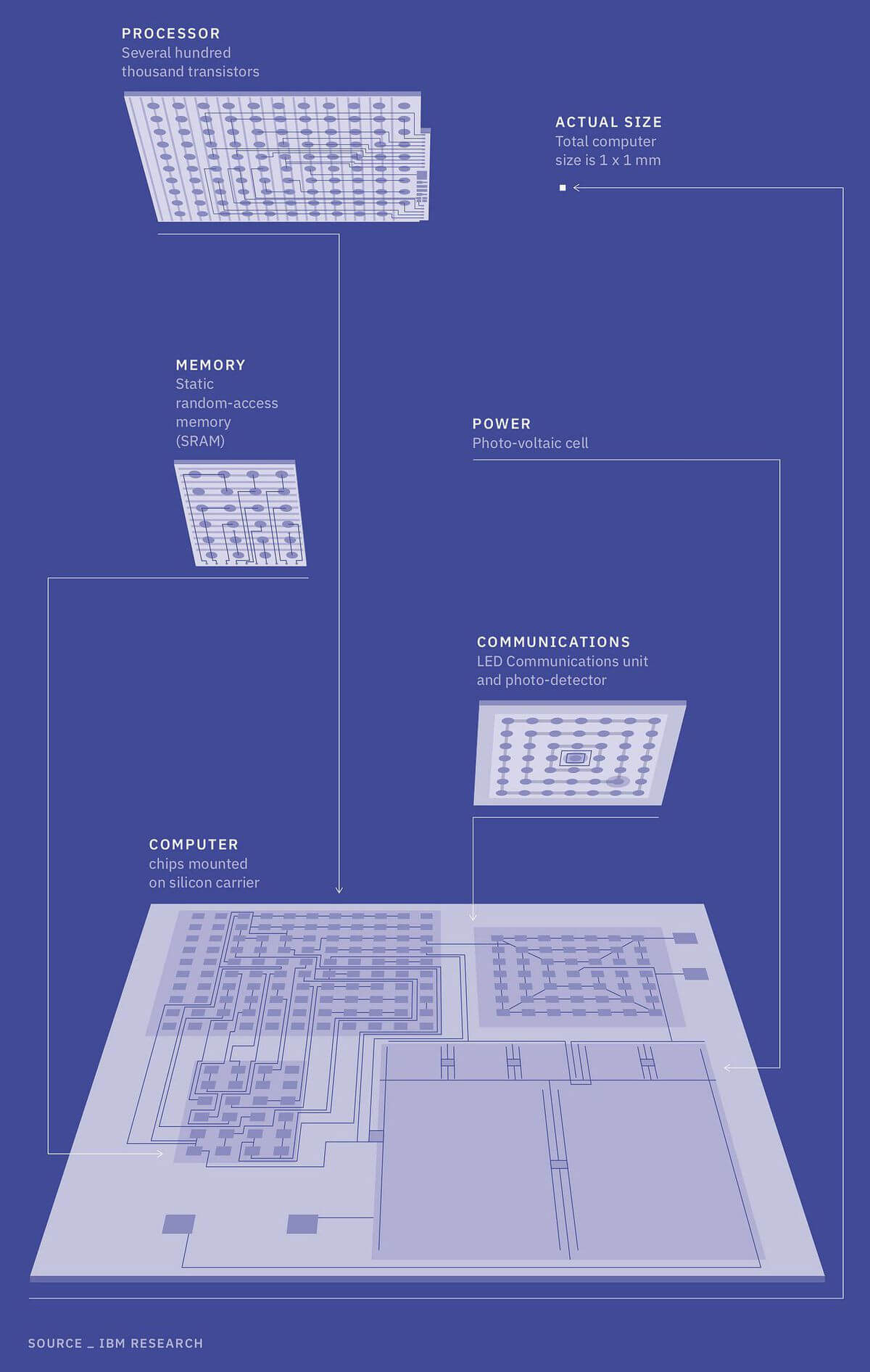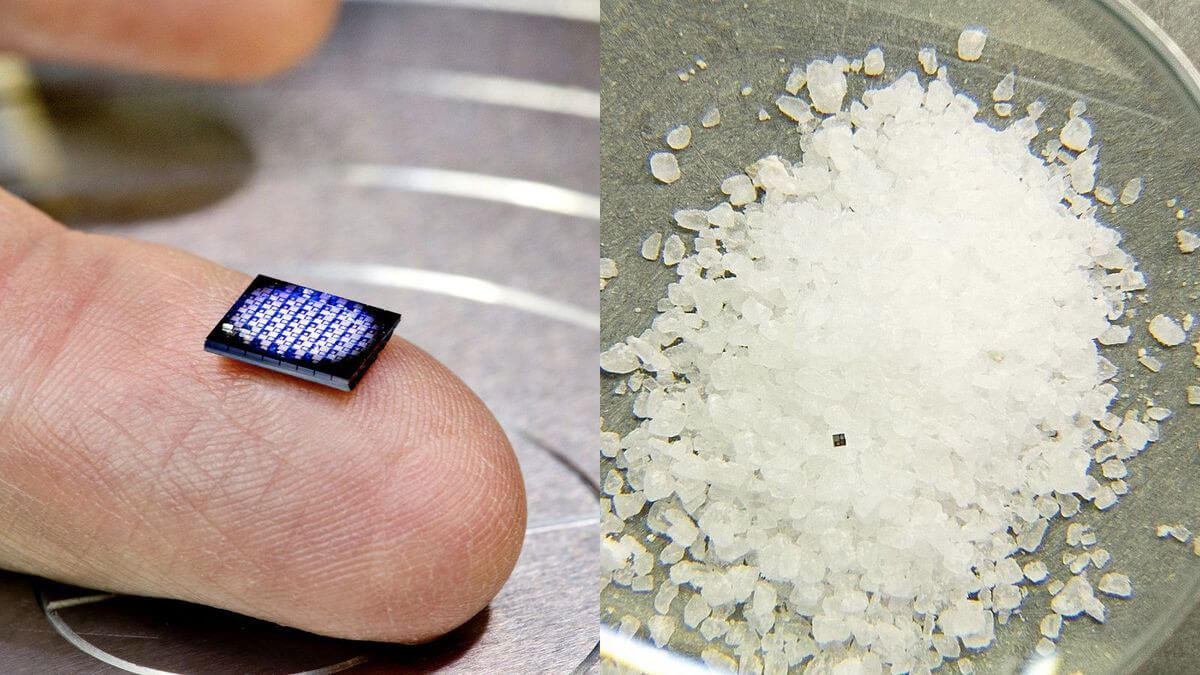We've seen companies boasting that they've created incredibly small computers in the past, but most of these are still massive compared to IBM's latest effort. Measuring just 1mm x 1mm, its device is the size of a grain of sand.
The company is unveiling the computer at its IBM Think 2018 conference, which starts today. You might imagine that it won't be able to do much, but it has the compute power of an x86 machine from the 1990s. Not very impressive compared to today's PCs, true, but then you do need a microscope to see it clearly---check out the picture of one placed on a pile of salt.
The tiny computer costs under ten cents to manufacture and contains up to one million transistors, according to IBM. The company said this "crypto-anchor" could be embedded in everyday items to improve shipment tracking and processing, acting as a data source of blockchain applications.
"Within the next five years, cryptographic anchors --- such as ink dots or tiny computers smaller than a grain of salt --- will be embedded in everyday objects and devices," said Arvind Krishna, IBM's head of research.
The tiny computer costs under ten cents to manufacture and contains up to one million transistors, according to IBM.
"They'll be used in tandem with blockchain's distributed ledger technology to ensure an object's authenticity from its point of origin to when it reaches the hands of the customer."
"These technologies pave the way for new solutions that tackle food safety, authenticity of manufactured components, genetically modified products, identification of counterfeit objects and provenance of luxury goods."

Mashable reports that the computer even has enough power to perform basic AI functions, such as sorting the data it's been given. In addition to all those transistors, it includes some static random-access memory (SRAM), a light-emitting diode (LED) and photo-detector for communicating, and a photo-voltaic cell for power.
IBM's researchers are still testing the prototype model, so don't expect them to hit the market anytime soon. But it's amazing to think the same power we saw in PCs from the 1990s is now available in something the size of a grain of salt.
